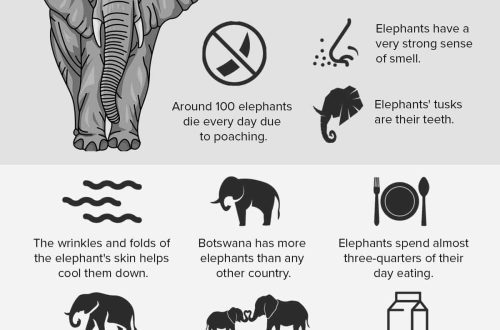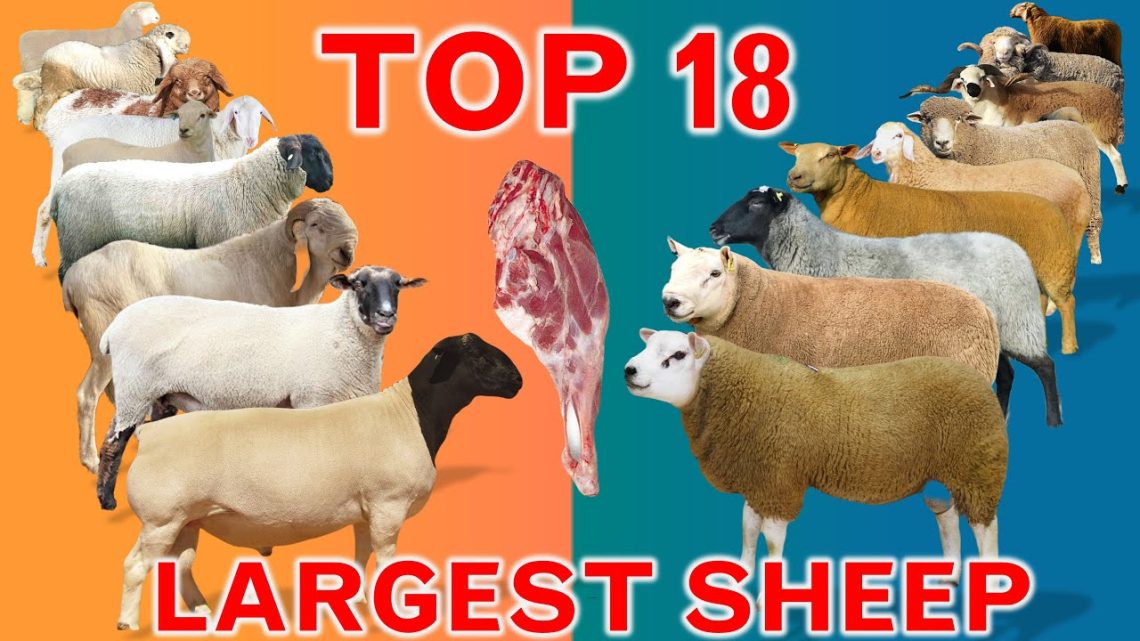
Top 10 largest sheep breeds in the world
Sheep have been domesticated by humans since ancient times. They are kept for wool and meat. The first domestic sheep appeared about 8 thousand years ago, where Turkey is now. Gradually, sheep breeding began to be practiced all over the world. Now huge flocks of sheep can be found in China, Australia, India, etc.
Sheep wool is used much more often than the wool of other animals. Lamb is the favorite meat of many nations. Cheese and cooking oil are made from sheep’s milk. It was the sheep that was the world’s first cloned mammal.
Now many breeds of sheep have been bred, which differ significantly from each other. The largest sheep in the world weigh over 180 kg. There is a constant selection selection, which helps to improve certain characteristics of animals.
Contents
10 Romanovskaya, 50-100 kg
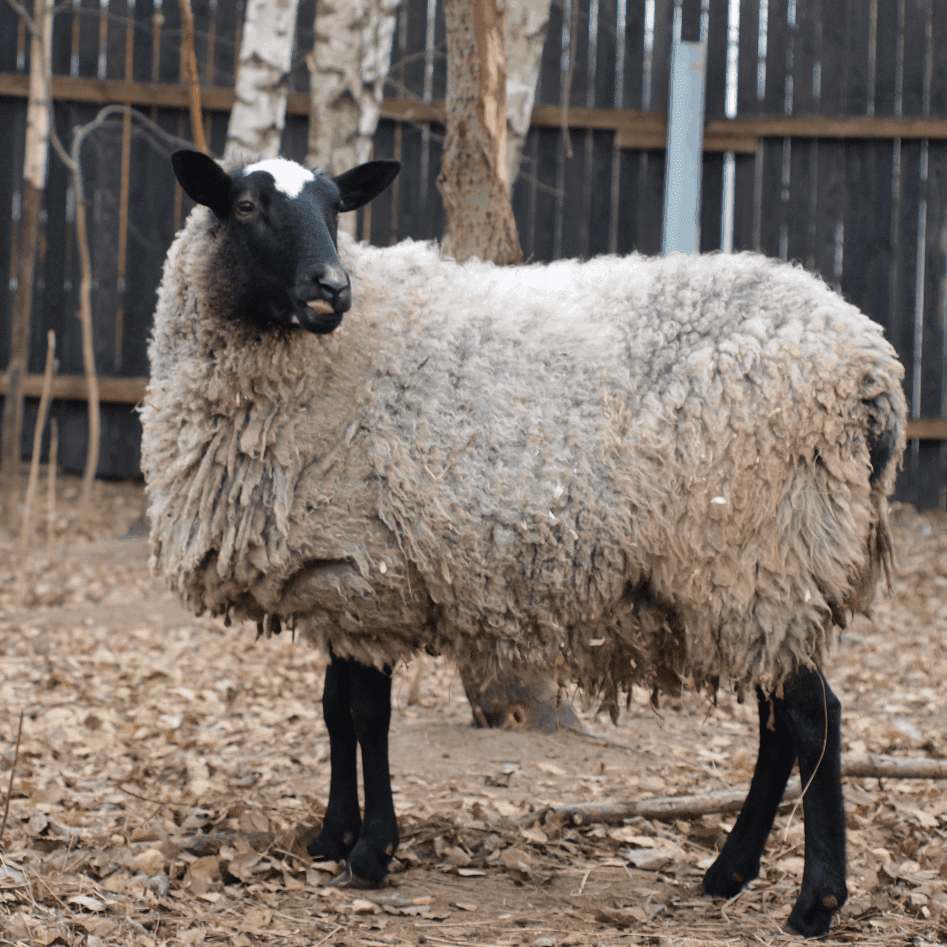 In the 18th century, in the Yaroslavl province, peasant farms appeared Romanov sheep. She was one of the most outstanding in terms of fur coat qualities and received such a name, because. originally spread in the Romanovo-Borisoglebsky district.
In the 18th century, in the Yaroslavl province, peasant farms appeared Romanov sheep. She was one of the most outstanding in terms of fur coat qualities and received such a name, because. originally spread in the Romanovo-Borisoglebsky district.
The uterus of this breed is small, weighing up to 55 kg, but some individuals grow up to 90 kg, while rams are much heavier – from 65 to 75 kg, sometimes they weigh 100 kg. They are kept for the sake of the lightest, smartest and most durable sheepskins.
The skin of 6-8 months old lambs is especially valued. In babies of this breed, the cover is black, but from the second to fourth week it becomes lighter, and by five months it is depigmented.
But, despite the fact that they are bred for sheepskin, they are also valued as sources of meat, because. already at 100 days, lambs can weigh up to 22 kg, and at 9 months – 40 kg.
9. Kuibyshevskaya, 70-105 kg
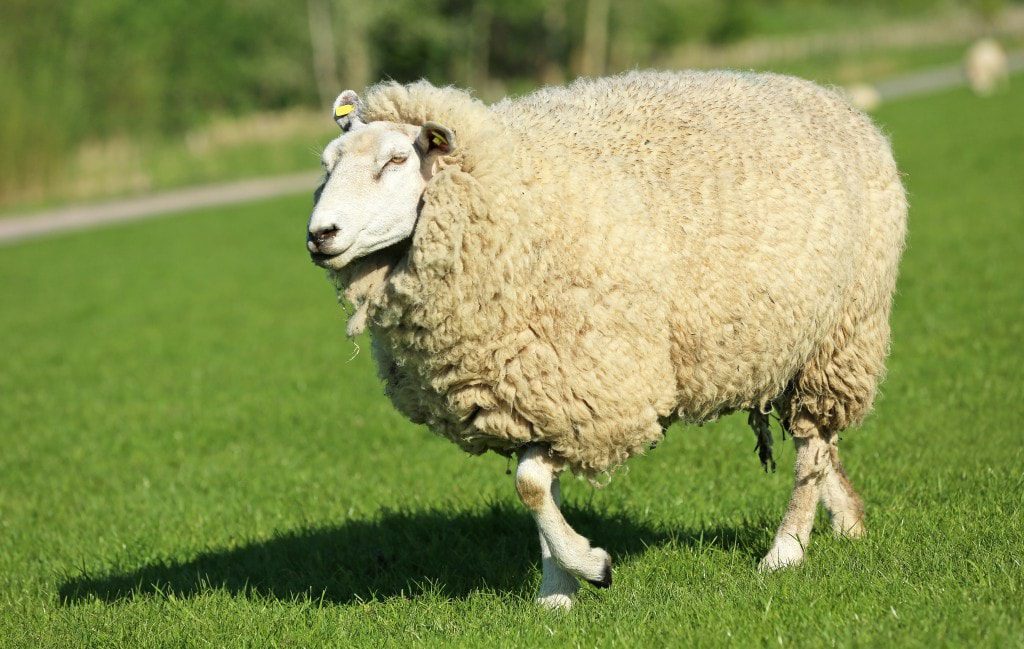 This breed of sheep got its name due to the place where it was bred – in the Kuibyshev region in the mid-30s of the twentieth century. During the war, breeding work had to be interrupted, but in 1948 a new domestic breed was finally formed.
This breed of sheep got its name due to the place where it was bred – in the Kuibyshev region in the mid-30s of the twentieth century. During the war, breeding work had to be interrupted, but in 1948 a new domestic breed was finally formed.
Sheeps Kuibyshev breed distinguished by thick, long and dense hair with large curls of white. But they are also kept for the sake of meat. At 4 months, rams already weigh up to 30 kg, by 12 months they gain up to 50 kg, and an adult animal can weigh up to 120 kg.
The meat of sheep of this breed is considered to be of high quality, it does not have a dense inner layer of fat, but only the most delicate fatty layer. It is called marble, and it is highly valued, because. characterized by tenderness and juiciness. But such meat occurs only in animals on free pasture.
8. North Caucasian, 60-120 kg
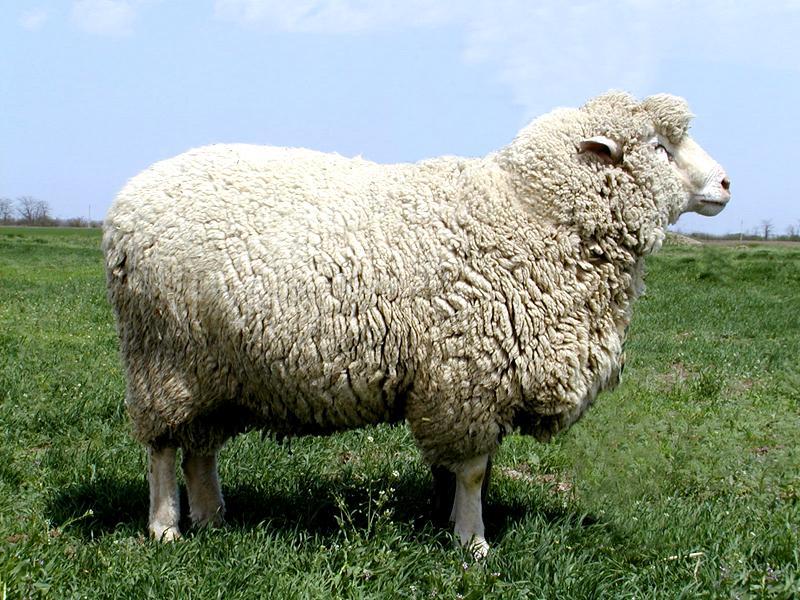 This is a meat-wool breed that was bred in 1944-1960. Sheep North Caucasian breed distinguished by large growth. They are white in color, but there may be small spots on the ears, legs and nose of a darker color.
This is a meat-wool breed that was bred in 1944-1960. Sheep North Caucasian breed distinguished by large growth. They are white in color, but there may be small spots on the ears, legs and nose of a darker color.
The uterus of this breed weighs from 55 to 58 kg, while the mass of rams is from 90 to 100 kg, the maximum is 150 kg. Most often, this breed can be found in the North Caucasus, in Armenia and Ukraine. Another advantage is its high fertility. 100 queens can bring about 140 lambs.
7. Gorkovskaya, 80-130 kg
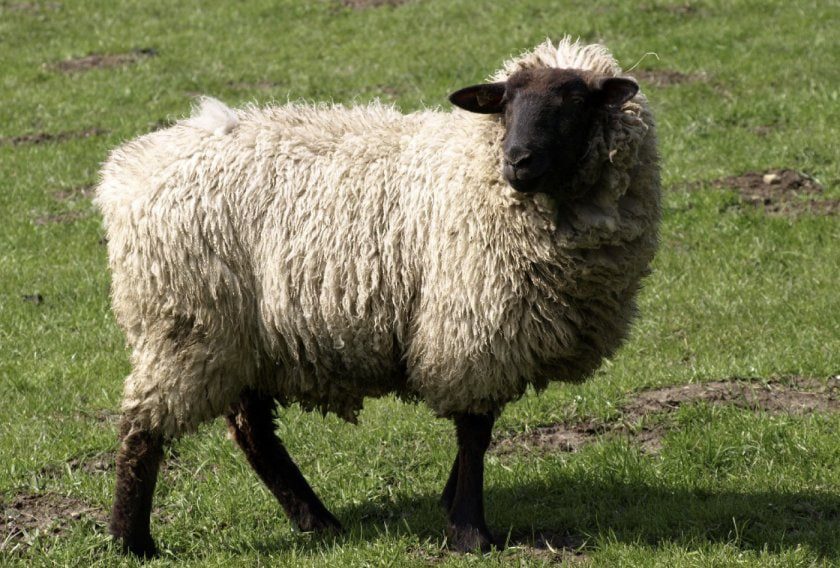 Domestic breed, which was bred on the collective farms of the Gorky region of the former USSR in the 1936-1950s. These are quite large animals: rams can weigh from 90 to 130 kg, and queens – from 60 to 90 kg. They have long white hair, but the head, ears and tail are dark.
Domestic breed, which was bred on the collective farms of the Gorky region of the former USSR in the 1936-1950s. These are quite large animals: rams can weigh from 90 to 130 kg, and queens – from 60 to 90 kg. They have long white hair, but the head, ears and tail are dark.
Gorky breed considered precocious, quickly pays for all the costs of feed, quite prolific. The disadvantages include a small amount of wool and a heterogeneous fleece.
6. Volgograd, 65-125 kg
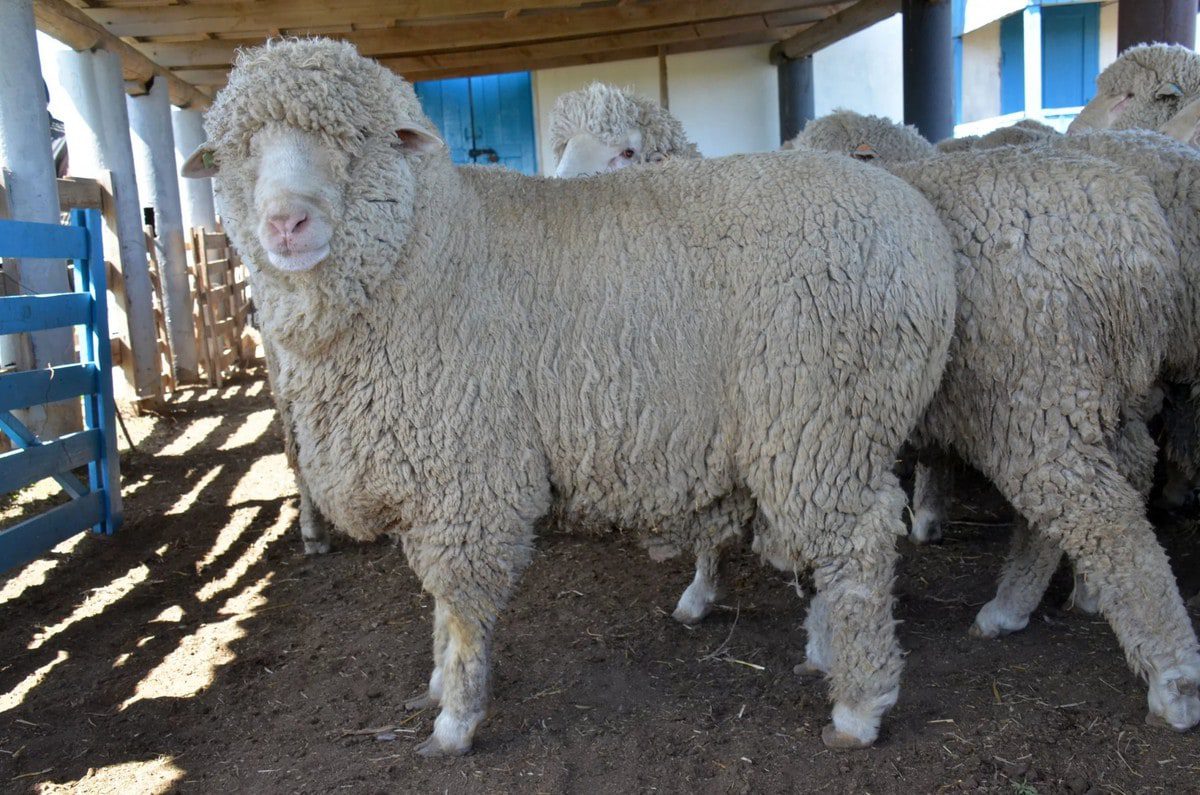 The breed appeared in the Volgograd region, at the Romashkovsky state farm, in 1932-1978 of the twentieth century. As a result of long work, they were able to breed animals with thick white hair, which grows up to 8-10,5 cm. Up to 15 kg of wool is collected from a ram, and up to 6 kg from a uterus.
The breed appeared in the Volgograd region, at the Romashkovsky state farm, in 1932-1978 of the twentieth century. As a result of long work, they were able to breed animals with thick white hair, which grows up to 8-10,5 cm. Up to 15 kg of wool is collected from a ram, and up to 6 kg from a uterus.
Also noteworthy is the meat quality. Volgograd breed. Queens weigh up to 66 kg, and rams – from 110 to 125 kg. This breed is bred in the Volga region, in the Urals, in central Russia.
The number of this livestock is constantly growing, because. she has many advantages: early maturation, fertility, gives a lot of wool and meat, quickly adapts to the conditions of detention, can withstand any weather conditions, and has excellent immunity.
5. Dorper, 140 kg
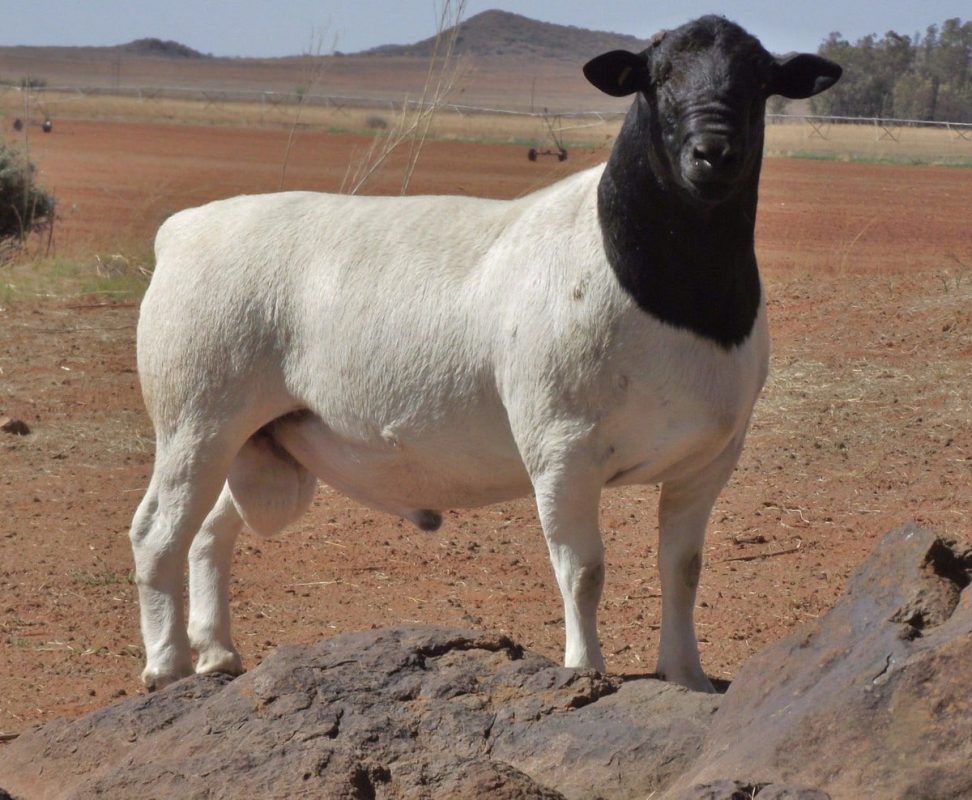 The breed appeared in 1930 in the South of America. At that time, breeders were working on breeding animals that would not be afraid of unbearable heat. The result is Doper breed, whose representatives can live without water for 2-3 days and feel fine without a balanced diet. And at the same time it has good productive qualities.
The breed appeared in 1930 in the South of America. At that time, breeders were working on breeding animals that would not be afraid of unbearable heat. The result is Doper breed, whose representatives can live without water for 2-3 days and feel fine without a balanced diet. And at the same time it has good productive qualities.
This is a meat breed, which can be recognized by the white color of the body and the black head and neck. In summer, animals shed, there are almost no areas with wool, but this is not a disadvantage, but an advantage, because. these sheep do not need to be sheared.
Sheep of the Doper breed are hardy, the number of their livestock is rapidly increasing (calving – 2 times a year, often more than 1 lamb), not demanding on food, with strong immunity. The mass of an adult female is from 60 to 70 kg, and that of a ram is from 90 to 140 kg. Meat – with excellent taste, smells good.
4. Edelbay, 160 kg
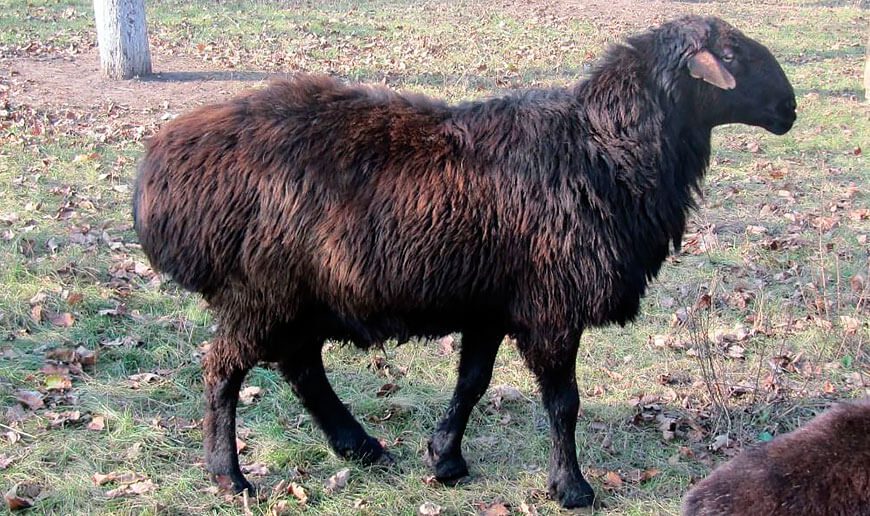 The breed appeared about 200 years ago, Kazakh shepherds worked on its creation. They sought to develop a breed of sheep that could adapt to a nomadic lifestyle: it was hardy and endured difficult conditions of existence.
The breed appeared about 200 years ago, Kazakh shepherds worked on its creation. They sought to develop a breed of sheep that could adapt to a nomadic lifestyle: it was hardy and endured difficult conditions of existence.
So there was breed Edelbay, which is not afraid of either extreme heat or cold, can get by by feeding on the sparse vegetation of the steppe and at the same time rapidly gaining weight. They belong to fat-tailed sheep, i.e. with fatty deposits near the sacrum.
On average, a ram weighs 110 kg, and a sheep – 70 kg, but some specimens gain up to 160 kg. They give not only meat, but also wool, fat, fatty milk. Disadvantages – poor fertility and poor quality wool, as well as sensitive hooves.
3. Suffolk, 180 kg
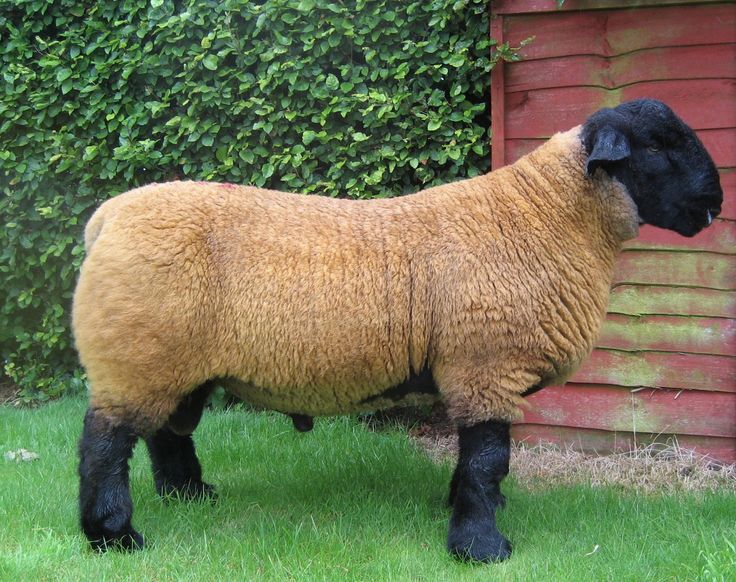 Breed meat-wool direction. It was bred in England in 1810. But they gained particular popularity in the XNUMXth century. Then about Suffolk known to the whole world. This is a large breed of white or golden color that has a black head and legs.
Breed meat-wool direction. It was bred in England in 1810. But they gained particular popularity in the XNUMXth century. Then about Suffolk known to the whole world. This is a large breed of white or golden color that has a black head and legs.
The breed has become popular, because. they are early maturing, fast-growing, have excellent immunity. They rarely have leg diseases, quickly adapt to different conditions, and have a high birth rate.
Sheep weigh from 80 to 100 kg, and rams – from 110 to 140 kg, there are also larger individuals. It is considered one of the best meat breeds in the world. Meat – without the unpleasant smell inherent in lamb, tasty and nutritious.
2. Argali, 65-180 mm
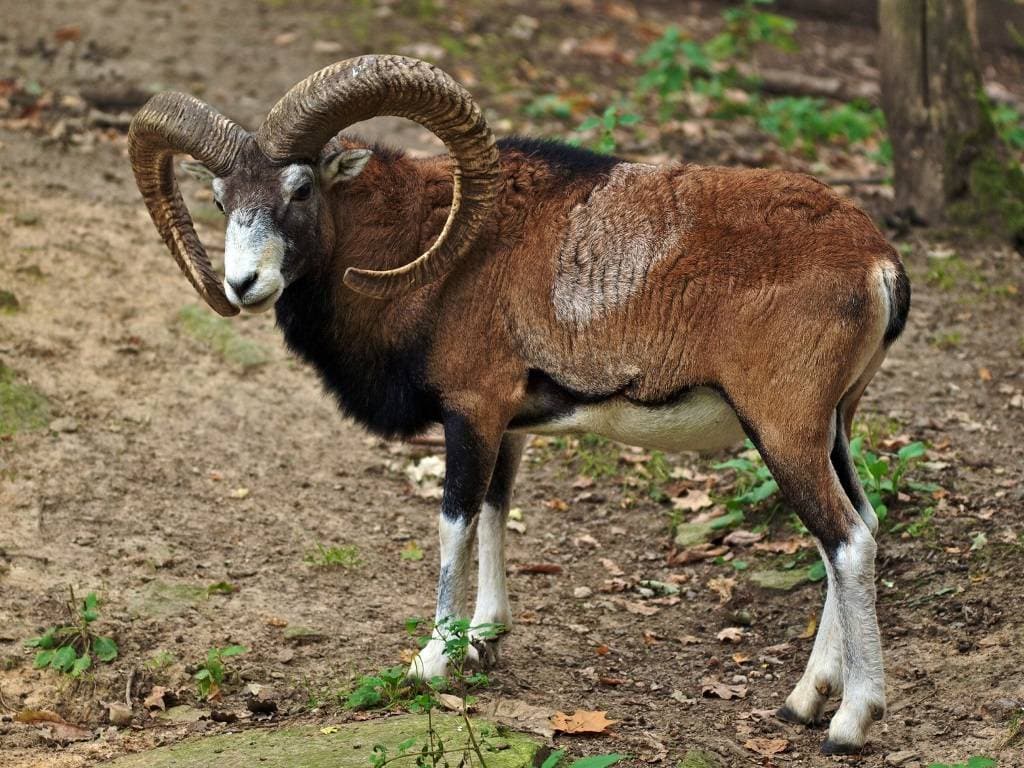 This mountain sheep lives in Central and Central Asia, is now in the Red Book. Archar considered the largest wild sheep, which can weigh from 65 to 180 kg. There are several of its subspecies, but the largest is the Pamir argali. Argali can be of different colors, from sandy light to grayish-brown. Dark stripes are visible on the sides. They live in open spaces.
This mountain sheep lives in Central and Central Asia, is now in the Red Book. Archar considered the largest wild sheep, which can weigh from 65 to 180 kg. There are several of its subspecies, but the largest is the Pamir argali. Argali can be of different colors, from sandy light to grayish-brown. Dark stripes are visible on the sides. They live in open spaces.
1. Hissar, 150-180 kg
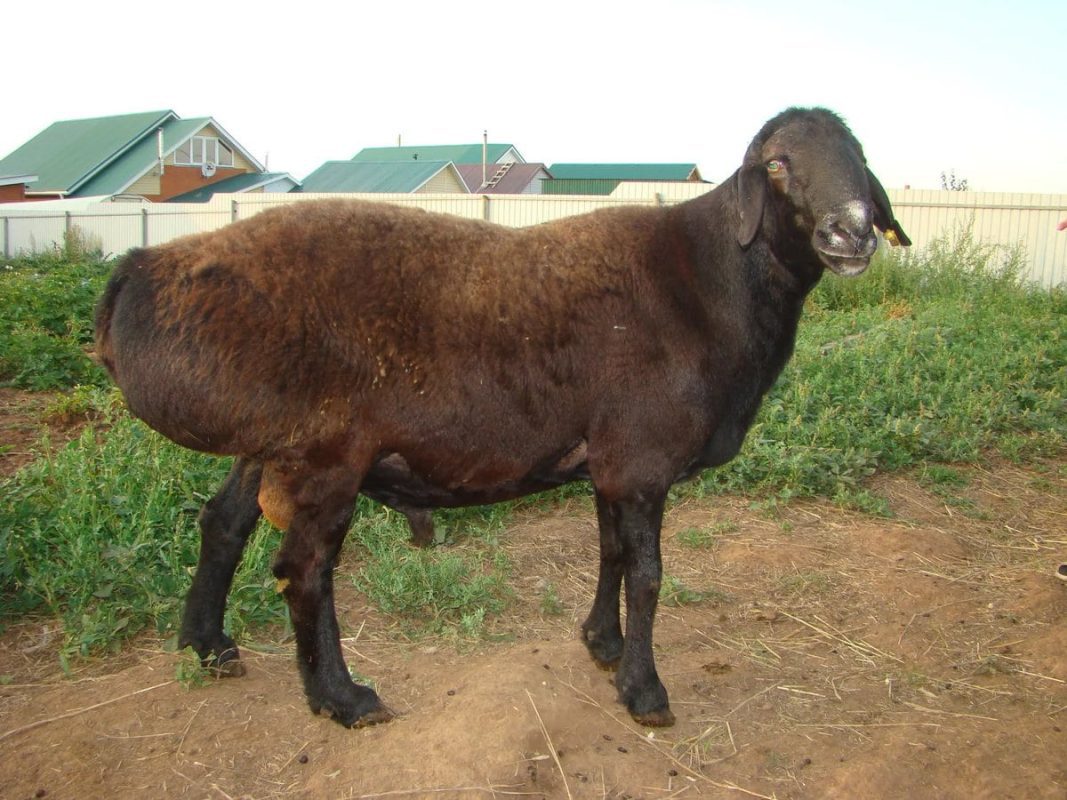 Among the cultivated breeds of sheep, the largest is considered Hissar breedrelated to fat tail. She is a meat-greasy direction. These sheep can often be found in Central Asia. Her homeland is Tajikistan, the name comes from the name of the Gissar valley, because. it was taken out on these pastures.
Among the cultivated breeds of sheep, the largest is considered Hissar breedrelated to fat tail. She is a meat-greasy direction. These sheep can often be found in Central Asia. Her homeland is Tajikistan, the name comes from the name of the Gissar valley, because. it was taken out on these pastures.
The record holder was the Hissar ram, which appeared in the Tajik SSR in 1927-28, its weight was 188 kg. Also, according to unconfirmed reports, there was a representative of this breed weighing 212 kg. It is a hardy breed of sheep that can withstand long treks of 500 km.




